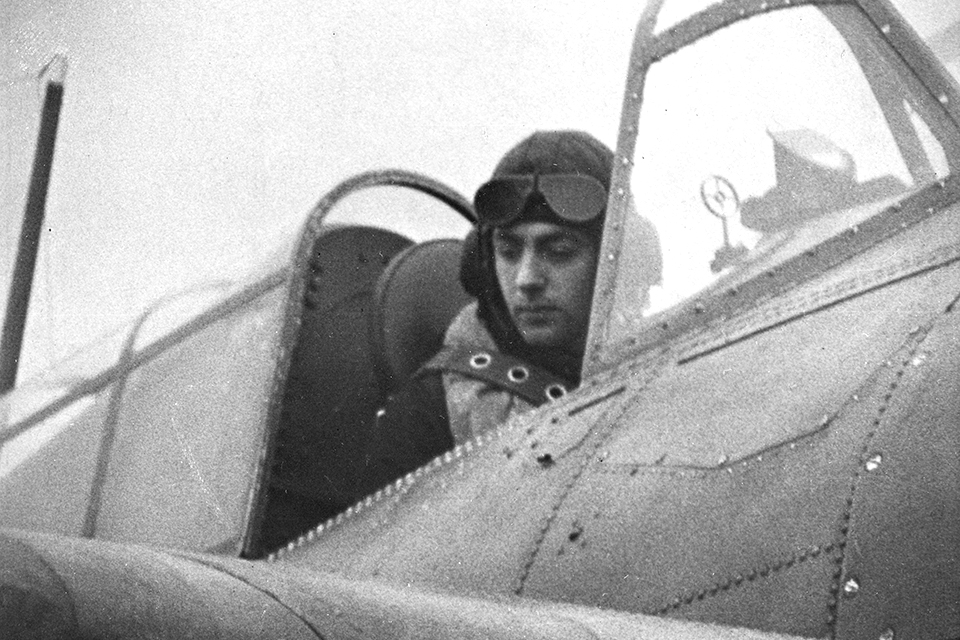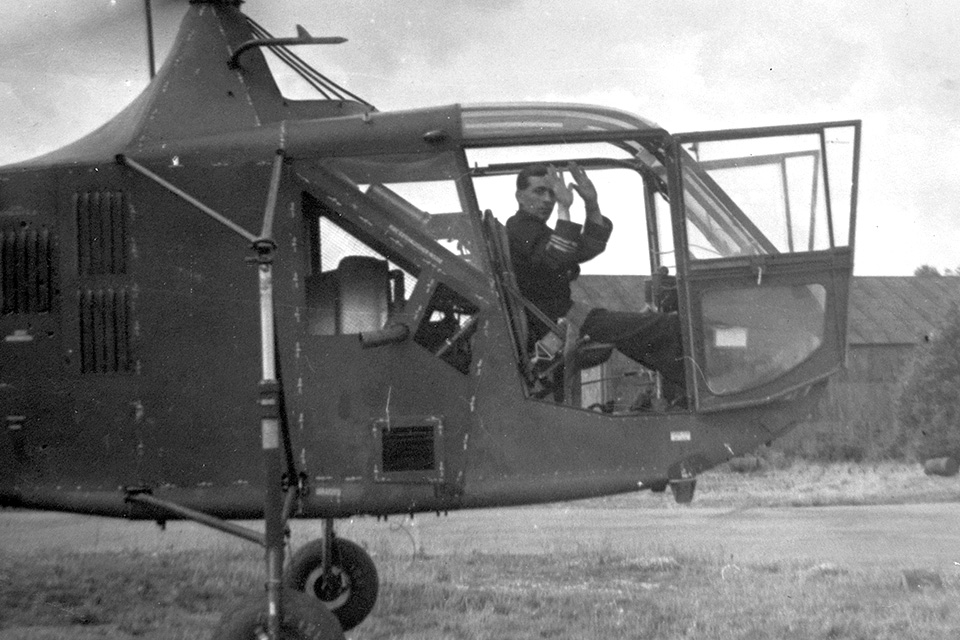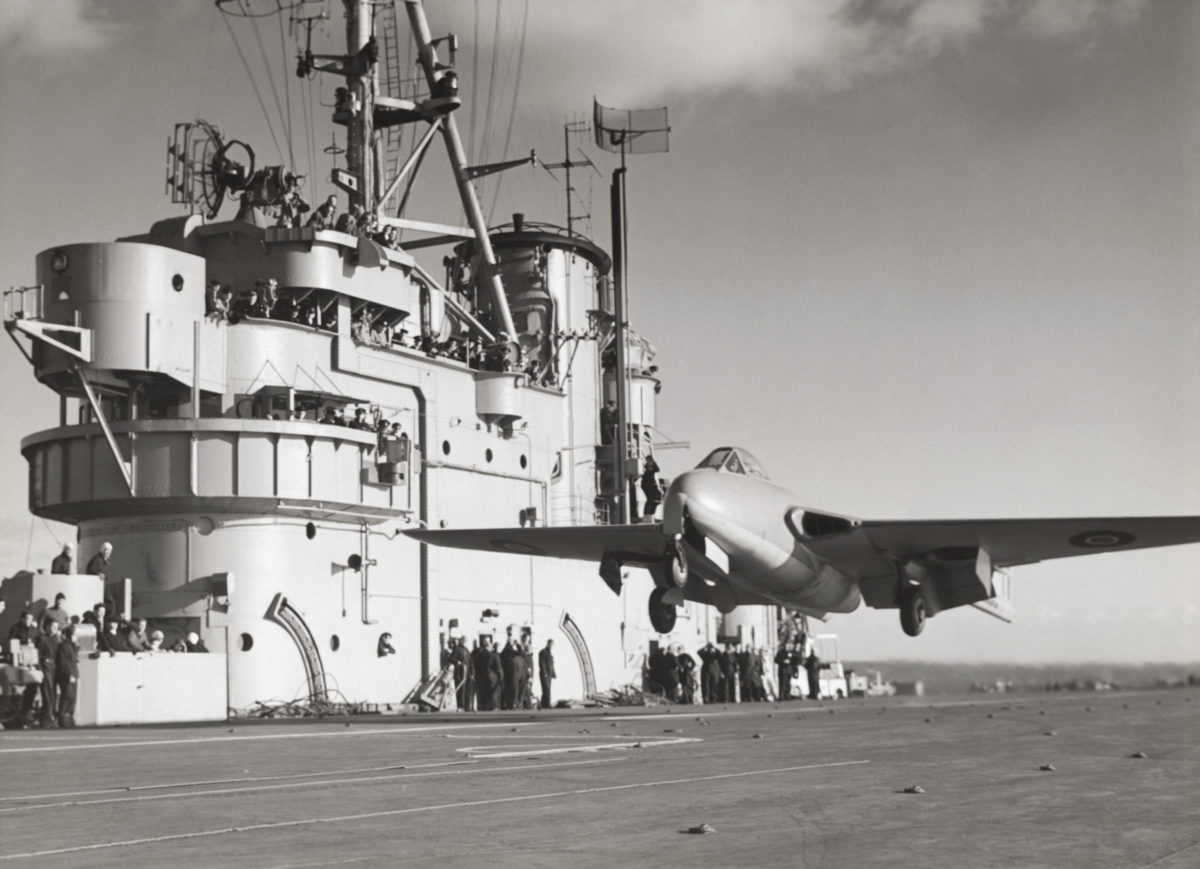World champion carrier aviator Captain Eric “Winkle” Brown logged an incredible 2,407 shipboard landings with the Royal Navy. He also flew a record 487 aircraft types (excluding subvariants). But those numbers are merely the framework for a unique flying career.
Born in Scotland in 1919, Eric Melrose Brown was inspired by his father, a World War I airman. Among Brown’s early influences was German General Ernst Udet, whom he met in Berlin in 1936. The Kaiser’s second-ranking ace insisted, “You must become a pilot!” Udet could scarcely have suspected how successful a pilot the young Scotsman would become.
When war returned to Europe in 1939, Brown was studying in Germany. Two SS men told him their countries were at war, and he was escorted to the Swiss border.
Brown joined the Royal Navy Volunteer Reserve, earning his wings in 1940. He was assigned to No. 802 Squadron, flying new Grumman Martlets (F4F-3 Wildcats) from HMS Audacity, the first escort carrier. Escorting convoys, Brown shot down two Focke-Wulf Fw-200C Condors before his ship was sunk by a U-boat in December 1941.

Brown adored the stubby Grumman. In 1985 he and his wife Lynn visited the Champlin Fighter Museum in Arizona. Upon entering the World War II hangar Eric spotted the Wildcat and spread his arms wide, exclaiming, “Ah, the love of my life!”
The temperature in the hangar seemed to drop 10 degrees but Eric quickly recovered, nudging Lynn, “Except you, my dear!” She shot him a sideways glance. “Nice recovery!”
Brown spent the middle war years testing U.S. and British aircraft aboard Lend-Lease escort carriers. In that capacity he built up an enormous amount of experience.
In 2011 he explained his carrier landing technique:
“As to the subject of deck landings, I have records of the top ‘scorers’ in the Fleet Air Arm, and besides myself we had one other, Lieutenant Commander Bill Bailey, who just exceeded 2,000 deck landings, which he acquired during three years as a ‘clockwork mouse’ [demonstrating deck landings to endless courses of wartime naval aviator recruits]. However, after this there is a big gap down to 600, with very few in that bracket.
“I started my score in 1941 and really piled them up in 1942 and ’43 when I was graded as an escort carrier specialist and proofed all the new ‘Woolworth carriers’ coming over brand new from American shipyards, and some also from UK shipyards. I proofed 20 carriers in all, and this involved flying four types of aircraft [two torpedo bombers and two fighters] into each of normally eight arrester wires twice each with each type of aircraft, followed by an accelerated takeoff.
“At first I had three pilots to assist me, but they were soon withdrawn because their trap rate on a selected wire was too low and the process took far too long. When on my own my trap rate on a selected wire averaged about 80 percent without an LSO [landing signal officer], which I dispensed with largely because he was replaced too frequently or none was readily available in wartime.
“I employed a standard deck landing technique of never letting my approved speed creep above 1.1 Vs [stall speed], then aiming for the wire beyond the one that was my target and cutting the throttle as it disappeared from my forward view.
“In 1943 I was mainly engaged in deck landing various models of [Supermarine] Seafire while in the navy’s Service Trials Unit, and logged over 500 traps in that somewhat tricky aircraft.
“After 1941 I also became heavily involved in catapulting trials, particularly at Farnborough, where we had every type of new catapult installed. In fact, my total catapult launches [2,721] exceeds my total traps because so many were made ashore.”
In 1945 Brown’s German fluency put him in a position to help with collecting Luftwaffe aircraft for examination in Britain. He retrieved and evaluated a wide variety of groundbreaking German airplanes, including the Messerschmitt Me-262 and Arado Ar-234 jets, and he probably was the only foreigner to make a powered flight in the treacherous rocket-powered Me-163 Komet interceptor.
Another assignment involved interrogating Germany’s foremost aviatrix, Hanna Reitsch, whom he had met at a prewar event. Despite her controversial reputation as an unrepentant Nazi, they remained cordial long after the war.
That year Brown returned to carriers, marking a historic event. By his own admission he was “tremendously keen to beat the Yanks” in flying jets from shipboard. In December he took off and landed a de Havilland Sea Vampire aboard HMS Ocean, seven months before the U.S. Navy’s carrier tests.
While still on active duty in the Royal Navy, Brown wrote his memoir, Wings On My Sleeve, which became an aviation classic. He retired as a captain in 1970.

Much of Brown’s post-naval career was devoted to helicopters, as he had largely taught himself to fly a Sikorsky R-4 in 1945. In all, he flew nearly 40 types of helos, and in the 1980s he wrote extensively on civilian helicopter operations.
Brown’s highly readable pilot reports were expanded into a series of magazine articles later published in book form. They were largely topical, including Wings of the Navy, Wings of the Luftwaffe and Wings of the Weird and Wonderful. Perhaps his most intriguing book was 1988’s Duels in the Sky, comparing Allied fighters and attack aircraft against major Axis types. His matchups included theoretical dogfights, such as the Vought F4U Corsair versus the Focke-Wulf Fw-190, which never met in combat. At the end of the book he gives his picks for the greatest WWII fighters: Supermarine Spitfire and Fw-190 (tied for first place), Grumman Hellcat, North American Mustang IV (P-51D), Mitsubishi Zero and Hawker Tempest V.
Late in life, with his wealth of knowledge and Edinburgh brogue, Brown enchanted audiences around the world. He appears in hundreds of internet videos discussing every aspect of his exceptional career.
Winkle Brown departed the pattern in 2016, just past his 97th birthday. His records and his reputation are bound to remain unsurpassed.
This article originally appeared in the May 2020 issue of Aviation History. To subscribe, click here.

